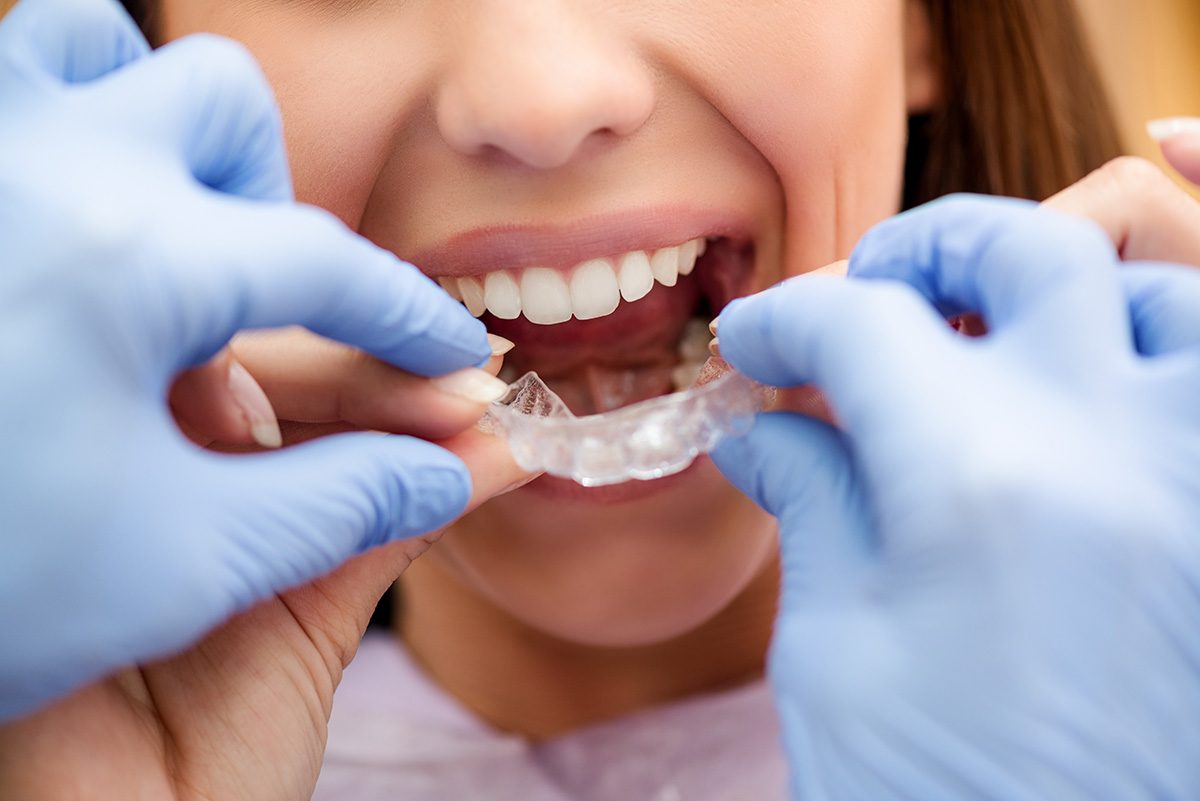Getting The Legacy Orthodontics To Work
Getting The Legacy Orthodontics To Work
Blog Article
Legacy Orthodontics Things To Know Before You Get This
Table of ContentsSome Ideas on Legacy Orthodontics You Should KnowLegacy Orthodontics Things To Know Before You Get ThisGetting My Legacy Orthodontics To WorkLegacy Orthodontics Things To Know Before You Get ThisSome Known Facts About Legacy Orthodontics.
In enhancement, we use adjustable treatment routines, flexible repayment options and an enjoyable, pleasurable experience.An orthodontist is a dental expert trained to identify, prevent, and deal with teeth and jaw irregularities. They fix existing conditions and are educated to recognize problems that may create in the future. Orthodontists function with people of any ages, from children to adults. Individuals usually connect an excellent smile with healthiness.
Malocclusion, or misaligned teeth, can result in dental problems, consisting of dental caries, gum tissue disease, and tough or agonizing eating. But not everybody is birthed with straight teeth. If you have a poor bite or large areas in between your teeth, you may intend to get in touch with a dental expert specializing in orthodontic care.
5 Simple Techniques For Legacy Orthodontics
( Photo Credit Score: DigitalVision/Getty Images) Orthodontists make use of fixed and detachable oral devices, like braces, retainers, and bands, to change the placement of teeth in your mouth. Orthodontic therapy is for dental irregularities, consisting of: Jagged teethBite problems, like an overbite or an underbiteCrowded teeth or teeth that are too far apartJaw misalignmentThe objective of orthodontic treatment is to enhance your bite.
A healthy bite ensures you can eat, eat, and speak appropriately. While you could assume of orthodontists as mostly for youngsters or young adults that require dental braces, they can remedy dental problems at any age. Orthodontists attend university, oral college, and orthodontic college. After graduation, they spend 2 or 3 years in an orthodontic residency program.
, yet not all dental practitioners are orthodontists. They concentrate on 2 locations: Just how to correctly and securely move teeth Just how to properly assist development in the teeth, jaw, and faceOnce an orthodontist has finished training, they have the option to end up being board certified.
9 Simple Techniques For Legacy Orthodontics
Misalignment, or malocclusion, is one of the most typical factor people see an orthodontist. It is genetic and is the result of size differences between the upper and lower jaw or between the jaw and teeth. Malocclusion brings about tooth overcrowding, an irregular jaw, or irregular bite patterns. Malocclusion is usually treated with: Your orthodontist connects steel, ceramic, or plastic square bonds to your teeth.
If you have just small malocclusion, you might be able to use clear dental braces, called aligners, rather than conventional braces (https://www.easel.ly/browserEasel/14512767). Some individuals require a headwear to aid move teeth into line with stress from outside the mouth. After dental braces or aligners, you'll require to wear a retainer. A retainer is a custom device that keeps your teeth in location.
They're frequently used on youngsters. They can create added room in the mouth without having to draw teeth. If you have a significant underbite or overbite, you could need orthognathic surgical procedure (also called orthodontic surgical treatment) to extend or shorten your jaw. Orthodontists use wires, surgical screws, or plates to sustain your jaw bone.
You may need to see an orthodontist if you have: Crowding or not adequate space for every one of your teethOverbite, when your upper teeth come over your base teethUnderbite, when your bottom teeth are also much forwardSpacing or concerns with gapsCrossbite, which is when your upper teeth fit behind your bottom teeth when your mouth is closedOpen bite or a vertical gap between your front bottom and top teethMisplaced midline, when the center of your base and top teeth don't align Remedying an oral malocclusion can: Make biting, eating, and talking easierImprove the proportion of our face and your general appearanceEase pain from temporomandibular joint problemsSeparate your teeth and make them easier to clean up, assisting avoid tooth degeneration or dental caries It's commonly a dental practitioner who first notifications misaligned teeth throughout a regular examination.
Some Ideas on Legacy Orthodontics You Should Know

During your first orthodontic appointment, you'll likely have: An oral examPhotos taken of your face and smileDental X-raysPanoramic (360 degree) X-rays of your face and headImpressions to develop molds of your teethThese examinations will certainly aid your click here for more info orthodontist understand exactly how to continue with your treatment. leesburg braces. An orthodontist is a dental expert that's had training to treat your teeth and jaw
Orthodontists may do surgery, exams,X-rays,and more to help you acquire an extra comfortable, much healthier smile. An orthodontist is concentrated on your bite, so something like a chipped tooth would be handled by a dental expert. Orthodontists are dental professionals yet not all dentists are orthodontists. Orthodontists are concentrated on your bite, or the means your teeth meshed, and the straightness of your teeth.
Ever wondered just how stars always seem to have perfectly lined up teeth? Orthodontists are dental experts that focus on remedying irregularities in the teeth and jaws.
The Definitive Guide to Legacy Orthodontics

, orthodontists have a varied toolkit at their disposal. These reliable braces use a system of brackets bonded to the teeth and linked by wires.
Clear aligners, like Invisalign, are a popular alternative for people seeking a much more discreet treatment option. These removable trays are tailor-made to progressively change the teeth's placement. Headwear may be used together with dental braces or aligners to apply extra targeted pressures, especially for fixing jaw discrepancies. In instances of narrow jaws, palatal expanders can be used to produce space for correct tooth placement.
Report this page